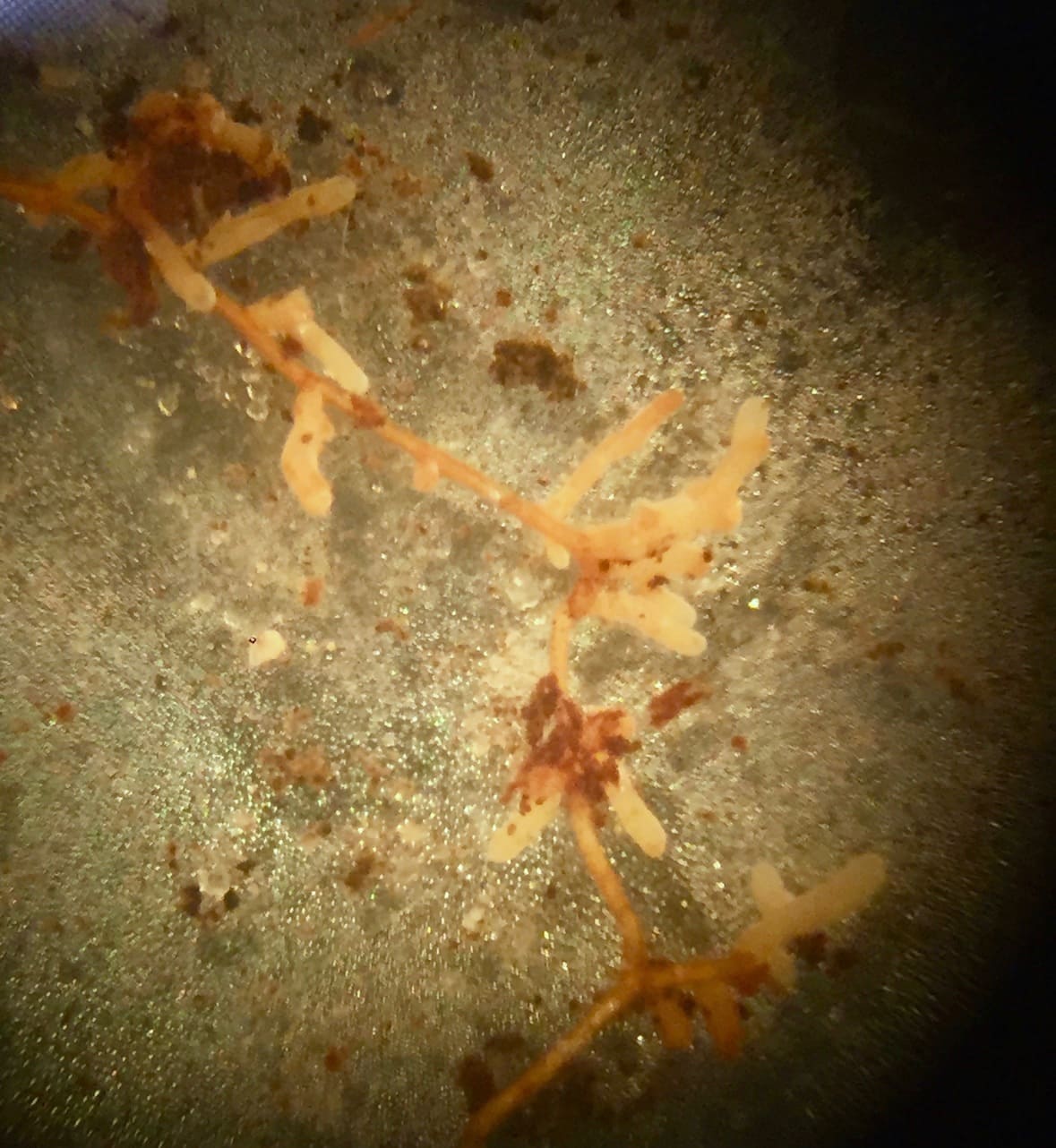By Corinne Vietorisz
August 14, 2018
It’s common knowledge that trees have roots to help them take up water, minerals, and nutrients. But what most people don’t know is that on their own, tree roots are actually pretty bad at the job of obtaining minerals and nutrients like phosphorus and nitrogen from the soil. It turns out that they need some serious help—and that help comes in the form of tiny symbiotic fungi called mycorrhizae that live on the roots of nearly all trees. This fungus helps the tree obtain nutrients and minerals from the soil, and in exchange it receives sugars from the tree that it can’t make on its own.

White ectomycorrhizae cover birch root tips in this photo taken under the microscope.
I’m fascinated by this incredible underground symbiosis. As a rising senior at Dartmouth College, I’m working with Dartmouth biology professor Matt Ayres and Dartmouth PhD student Ashley Lang to understand what factors impact the mycorrhizae at Hubbard Brook. I focus on a type of mycorrhizae called ectomycorrhizae (ECM) that live on the outside of roots (some mycorrhizae live inside plant roots!) and produce enzymes to break down minerals and nutrients for the tree. I’m studying how ECM fungi are impacted by the dominant tree species in an area and the type of soil they live in. How the presence of ash trees and their leaf litter impacts ECM is a particularly interesting question, because ash trees are projected to die off at Hubbard Brook in the near future due to the invasive emerald ash borer.

Black ectomycorrhizae cover birch root tips in this photo taken under the microscope.
At Hubbard Brook, I go out into the field to take soil samples and then bring them back to the lab to examine under a microscope so I can visually identify and count the ECM. Then, to correctly identify the ECM to the species level, I work here in the lab to extract and amplify their DNA to send off for genetic sequencing. After I get an idea of which species exist here at Hubbard Brook and which are the most common, I’ll examine their enzyme production to see what kinds of enzymes they produce and what environmental factors impact that production.
It’s unbelievable how complex the world is beneath the forest floor, and how ecologically necessary such a tiny fungus can be. I’m excited to be working here at Hubbard Brook to discover more about their critical role in forest ecosystems!

Me sorting through a soil core under the microscope and recording the types and frequencies of ECM.
